Carbon Nano Onions–Polystyrene Composite for Sensing S-Containing Amino Acids
Abstract
:1. Introduction
2. Experimental Details
2.1. Materials
2.2. Instrumentation
2.3. Modification of Electrode for Amino Acid Sensing
2.4. Cys Detection in Green Beans
3. Result and Discussion
3.1. Structural Characterization
3.2. Electrochemical Behavior of CNOs–PS/Pt-Modified Electrode
3.3. Effect of pH
3.4. Determination of Cys and Met in a Mixture
3.5. Detection of Cys in Green Beans
4. Conclusions
Author Contributions
Funding
Acknowledgments
Conflicts of Interest
References
- Pumera, M.; Ambrosi, A.; Bonanni, A.; Chng, E.L.K.; Poh, H.L. Graphene for electrochemical sensing and biosensing. TrAC Trends Anal. Chem. 2010, 29, 954–965. [Google Scholar] [CrossRef]
- Tripathi, K.M.; Kim, T.; Losic, D.; Tung, T.T. Recent advances in engineered graphene and composites for detection of volatile organic compounds (VOCs) and non-invasive diseases diagnosis. Carbon 2016, 110, 97–129. [Google Scholar] [CrossRef]
- Shahmiri, M.R.; Bahari, A.; Karimi-Maleh, H.; Hosseinzadeh, R.; Mirnia, N. Ethynylferrocene–NiO/MWCNT nanocomposite modified carbon paste electrode as a novel voltammetric sensor for simultaneous determination of glutathione and acetaminophen. Sens. Actuators B Chem. 2013, 177, 70–77. [Google Scholar] [CrossRef]
- Brownson, D.A.C.; Banks, C.E. Graphene electrochemistry: An overview of potential applications. Analyst 2010, 135, 2768–2778. [Google Scholar] [CrossRef]
- Shen, H.; Witowski, S.R.; Boyd, B.W.; Kennedy, R.T. Detection of Peptides by Precolumn Derivatization with Biuret Reagent and Preconcentration on Capillary Liquid Chromatography Columns with Electrochemical Detection. Anal. Chem. 1999, 71, 987–994. [Google Scholar] [CrossRef] [PubMed]
- Yang, Q.; Zhang, X.-L.; Ma, M.; Huang, K.-J.; Zhang, J.-X.; Ni, W.-Z.; Fang, C.-X.; Zheng, C.-Y. New high-performance liquid chromatographic method for sensitive determination of pheomelanin in biological materials by precolumn fluorescence derivatization with naphthalene-2,3-dicarboxaldehyde. J. Chromatogr. A 2007, 1146, 23–31. [Google Scholar] [CrossRef]
- Liu, X.; Luo, L.; Ding, Y.; Kang, Z.; Ye, D. Simultaneous determination of L-cysteine and L-tyrosine using Au-nanoparticles/poly-eriochrome black T film modified glassy carbon electrode. Bioelectrochemistry 2012, 86, 38–45. [Google Scholar] [CrossRef]
- Amelung, W.; Zhang, X.; Flach, K.W. Amino acids in grassland soils: Climatic effects on concentrations and chirality. Geoderma 2006, 130, 207–217. [Google Scholar] [CrossRef]
- Silván, J.M.; van de Lagemaat, J.; Olano, A.; del Castillo, M.D. Analysis and biological properties of amino acid derivates formed by Maillard reaction in foods. J. Pharm. Biomed. Anal. 2006, 41, 1543–1551. [Google Scholar] [CrossRef]
- Ali, H.; Pätzold, R.; Brückner, H. Determination of l- and d-amino acids in smokeless tobacco products and tobacco. Food Chem. 2006, 99, 803–812. [Google Scholar] [CrossRef]
- Chaudhury, P.K.; Dubey, P.; Saxena, M.; Sarkar, S. Multiwalled Carbon Nanotube-Polystyrene Composite Modified Pt Electrode as an Electrochemical Gas Sensor. Adv. Sci. Lett. 2011, 4, 558–560. [Google Scholar] [CrossRef]
- Wang, W.; Rusin, O.; Xu, X.; Kim, K.K.; Escobedo, J.O.; Fakayode, S.O.; Fletcher, K.A.; Lowry, M.; Schowalter, C.M.; Lawrence, C.M.; et al. Detection of Homocysteine and Cysteine. J. Am. Chem. Soc. 2005, 127, 15949–15958. [Google Scholar] [CrossRef] [PubMed] [Green Version]
- Spãtaru, N.; Sarada, B.V.; Popa, E.; Tryk, D.A.; Fujishima, A. Voltammetric Determination of l-Cysteine at Conductive Diamond Electrodes. Anal. Chem. 2001, 73, 514–519. [Google Scholar] [CrossRef] [PubMed]
- Fei, S.; Chen, J.; Yao, S.; Deng, G.; He, D.; Kuang, Y. Electrochemical behavior of l-cysteine and its detection at carbon nanotube electrode modified with platinum. Anal. Biochem. 2005, 339, 29–35. [Google Scholar] [CrossRef] [PubMed]
- Gong, K.; Zhu, X.; Zhao, R.; Xiong, S.; Mao, L.; Chen, C. Rational Attachment of Synthetic Triptycene Orthoquinone onto Carbon Nanotubes for Electrocatalysis and Sensitive Detection of Thiols. Anal. Chem. 2005, 77, 8158–8165. [Google Scholar] [CrossRef] [PubMed]
- Ndamanisha, J.C.; Bai, J.; Qi, B.; Guo, L. Application of electrochemical properties of ordered mesoporous carbon to the determination of glutathione and cysteine. Anal. Biochem. 2009, 386, 79–84. [Google Scholar] [CrossRef]
- Deo, R.P.; Lawrence, N.S.; Wang, J. Electrochemical detection of amino acids at carbon nanotube and nickel-carbon nanotube modified electrodes. Analyst 2004, 129, 1076–1081. [Google Scholar] [CrossRef]
- Arribas, A.S.; Bermejo, E.; Chicharro, M.; Zapardiel, A.; Luque, G.L.; Ferreyra, N.F.; Rivas, G.A. Analytical applications of a carbon nanotubes composite modified with copper microparticles as detector in flow systems. Anal. Chim. Acta 2006, 577, 183–189. [Google Scholar] [CrossRef]
- Dong, S.; Zhang, S.; Chi, L.; He, P.; Wang, Q.; Fang, Y. Electrochemical behaviors of amino acids at multiwall carbon nanotubes and Cu2O modified carbon paste electrode. Anal. Biochem. 2008, 381, 199–204. [Google Scholar] [CrossRef]
- Geng, D.; Li, M.; Bo, X.; Guo, L. Molybdenum nitride/nitrogen-doped multi-walled carbon nanotubes hybrid nanocomposites as novel electrochemical sensor for detection l-cysteine. Sens. Actuators B Chem. 2016, 237, 581–590. [Google Scholar] [CrossRef]
- Ziyatdinova, G.; Grigor’eva, L.; Morozov, M.; Gilmutdinov, A.; Budnikov, H. Electrochemical oxidation of sulfur-containing amino acids on an electrode modified with multi-walled carbon nanotubes. Microchim. Acta 2009, 165, 353–359. [Google Scholar] [CrossRef]
- Nezamzadeh-Ejhieh, A.; Hashemi, H.-S. Voltammetric determination of cysteine using carbon paste electrode modified with Co(II)-Y zeolite. Talanta 2012, 88, 201–208. [Google Scholar] [CrossRef] [PubMed]
- Kakhki, S.; Shams, E. Voltammetric determination of cysteine at a carbon paste electrode modified with Cu (II)-salen complex. J. Phys. Chem. Electrochem. 2011, 2, 78–81. [Google Scholar]
- Mazloum-Ardakani, M.; Taleat, Z.; Beitollahi, H.; Naeimi, H. Selective determination of cysteine in the presence of tryptophan by carbon paste electrode modified with quinizarine. J. Iran. Chem. Soc. 2010, 7, 251–259. [Google Scholar] [CrossRef]
- Jeevagan, A.J.; John, S.A. Electrochemical determination of L-methionine using the electropolymerized film of non-peripheral amine substituted Cu(II) phthalocyanine on glassy carbon electrode. Bioelectrochemistry 2012, 85, 50–55. [Google Scholar] [CrossRef]
- Kannan, A.; Sevvel, R. Gold nanoparticles embedded electropolymerized thin film of pyrimidine derivative on glassy carbon electrode for highly sensitive detection of l-cysteine. Mater. Sci. Eng. C 2017, 78, 513–519. [Google Scholar] [CrossRef]
- Lee, P.T.; Thomson, J.E.; Karina, A.; Salter, C.; Johnston, C.; Davies, S.G.; Compton, R.G. Selective electrochemical determination of cysteine with a cyclotricatechylene modified carbon electrode. Analyst 2015, 140, 236–242. [Google Scholar] [CrossRef]
- Molaakbari, E.; Mostafavi, A.; Beitollahi, H. Simultaneous electrochemical determination of dopamine, melatonin, methionine and caffeine. Sens. Actuators B Chem. 2015, 208, 195–203. [Google Scholar] [CrossRef]
- Ragu Sasikumar, P.R.; Shen, M.C.; Thavuduraj, K.; Shih, Y.L.; Tse, W.C.; Wen, H.C. Electrochemical determination of sulfur-containing amino acid on Screen-Printed Carbon Electrode modified with Graphene Oxide. Int. J. Electrochem. Sci. 2017, 12, 4077–4085. [Google Scholar] [CrossRef]
- Tavakkoli, N.; Soltani, N.; Khorshidi, E. Preparation of Ru–Pt bimetallic monolayer on nanoporous gold film electrode and its application as an ultrasensitive sensor for determination of methionine. RSC Adv. 2017, 7, 21827–21836. [Google Scholar] [CrossRef] [Green Version]
- Hou, C.; Fan, S.; Lang, Q.; Liu, A. Biofuel Cell Based Self-Powered Sensing Platform for l-Cysteine Detection. Anal. Chem. 2015, 87, 3382–3387. [Google Scholar] [CrossRef] [PubMed]
- Wang, Y.; Liu, S.; Liu, Z.; Yang, J.; Hu, X. A l-tryptophan-Cu(II) based fluorescence turn-on probe for detection of methionine. J. Lumin. 2014, 147, 107–110. [Google Scholar] [CrossRef]
- Tsuyoshi, M.; Tsukuru, M.; Kenjiro, F.; Daisuke, K.; Shizuo, T. Cysteine detection in water using an organic field-effect transistor with a gold extended-gate electrode. Jpn. J. Appl. Phys. 2015, 54, 04DK01. [Google Scholar]
- Dutta, T.; Sarkar, S. Nanocarbon–{[Na10(PrW10O36)]2·130H2O} composite to detect toxic food coloring dyes at nanolevel. Appl. Nanosci. 2016, 6, 1191–1197. [Google Scholar] [CrossRef] [Green Version]
- Tripathi, K.M.; Sonker, A.K.; Bhati, A.; Bhuyan, J.; Singh, A.; Singh, A.; Sarkar, S.; Sonkar, S.K. Large-scale synthesis of soluble graphitic hollow carbon nanorods with tunable photoluminescence for the selective fluorescent detection of DNA. New J. Chem. 2016, 40, 1571–1579. [Google Scholar] [CrossRef]
- Babar, D.G.; Garje, S.S. Nitrogen and Phosphorus Co-Doped Carbon Dots for Selective Detection of Nitro Explosives. ACS Omega 2020, 5, 2710–2717. [Google Scholar] [CrossRef]
- Babar, D.G.; Pakhira, B.; Sarkar, S. DNA–carbon nano onion aggregate: Triangle, hexagon, six-petal flower to dead-end network. Appl. Nanosci. 2017, 7, 291–297. [Google Scholar] [CrossRef] [Green Version]
- Babar, D.G.; Sarkar, S. Self-assembled nanotubes from single fluorescent amino acid. Appl. Nanosci. 2017, 7, 101–107. [Google Scholar] [CrossRef] [Green Version]
- Ghosh, M.; Sonkar, S.K.; Saxena, M.; Sarkar, S. Carbon Nano-onions for Imaging the Life Cycle of Drosophila Melanogaster. Small 2011, 7, 3170–3177. [Google Scholar] [CrossRef]
- Sonkar, S.K.; Ghosh, M.; Roy, M.; Begum, A.; Sarkar, S. Carbon nano-onions as nontoxic and high-fluorescence bioimaging agent in food chain—An In vivo study from unicellular E. coli to Multicellular, C. elegans. Mater. Express 2012, 2, 105–114. [Google Scholar] [CrossRef]
- Sonkar, S.K.; Roy, M.; Babar, D.G.; Sarkar, S. Water soluble carbon nano-onions from wood wool as growth promoters for gram plants. Nanoscale 2012, 4, 7670–7675. [Google Scholar] [CrossRef] [PubMed]
- Zhou, M.; Ding, J.; Guo, L.-P.; Shang, Q.-K. Electrochemical Behavior of l-Cysteine and Its Detection at Ordered Mesoporous Carbon-Modified Glassy Carbon Electrode. Anal. Chem. 2007, 79, 5328–5335. [Google Scholar] [CrossRef] [PubMed]
- Enache, T.A.; Oliveira-Brett, A.M. Boron doped diamond and glassy carbon electrodes comparative study of the oxidation behaviour of cysteine and methionine. Bioelectrochemistry 2011, 81, 46–52. [Google Scholar] [CrossRef] [PubMed]


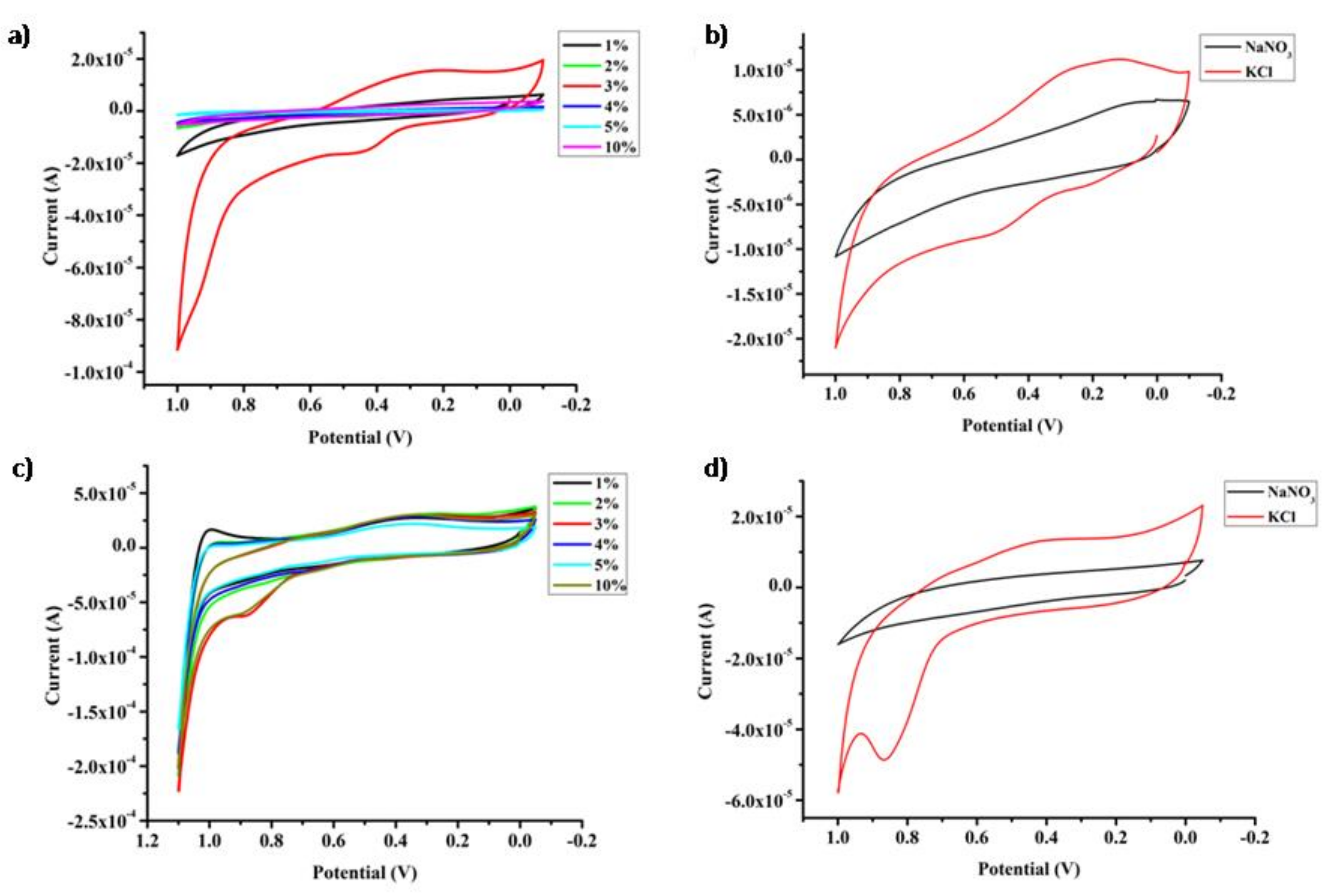
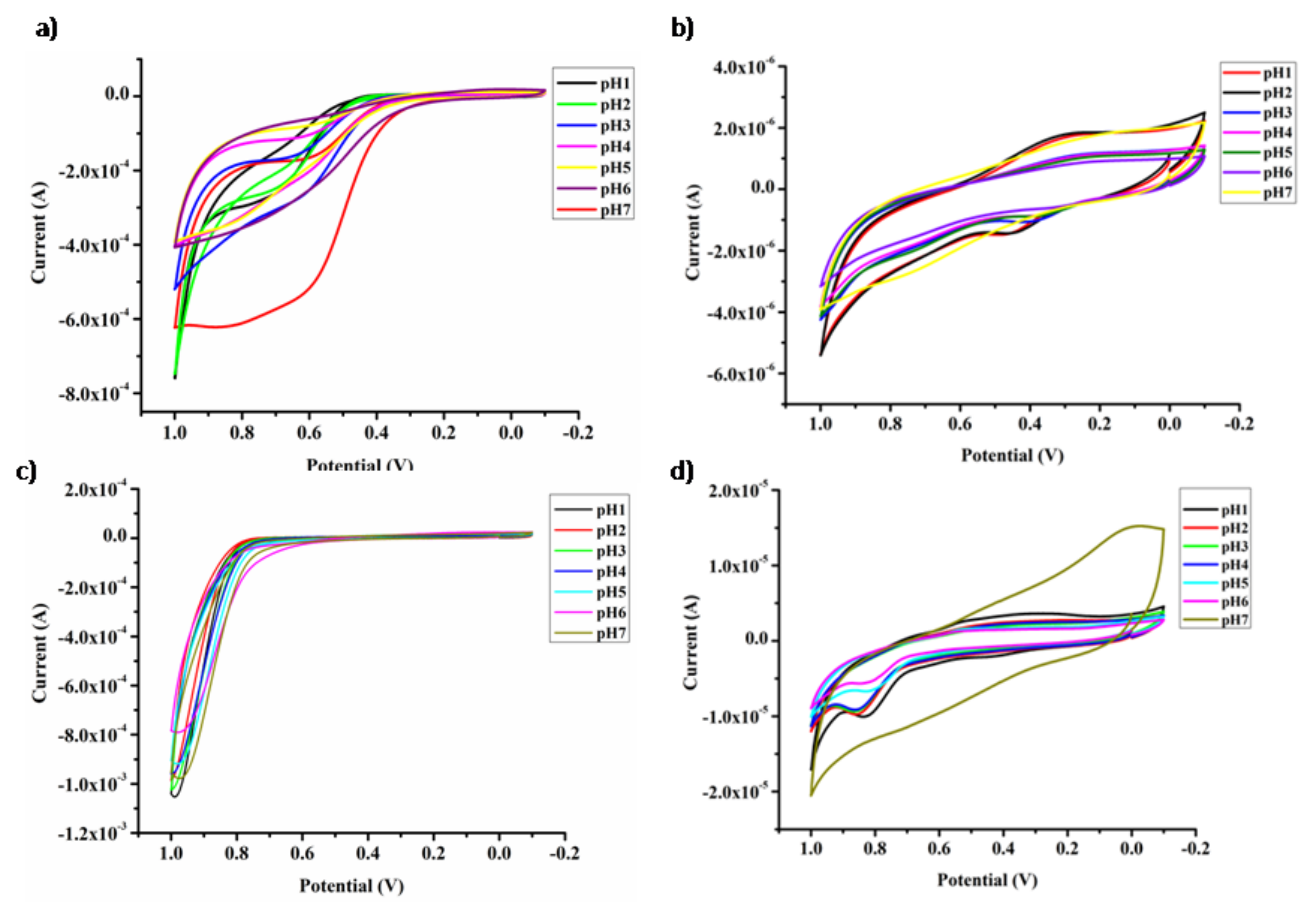

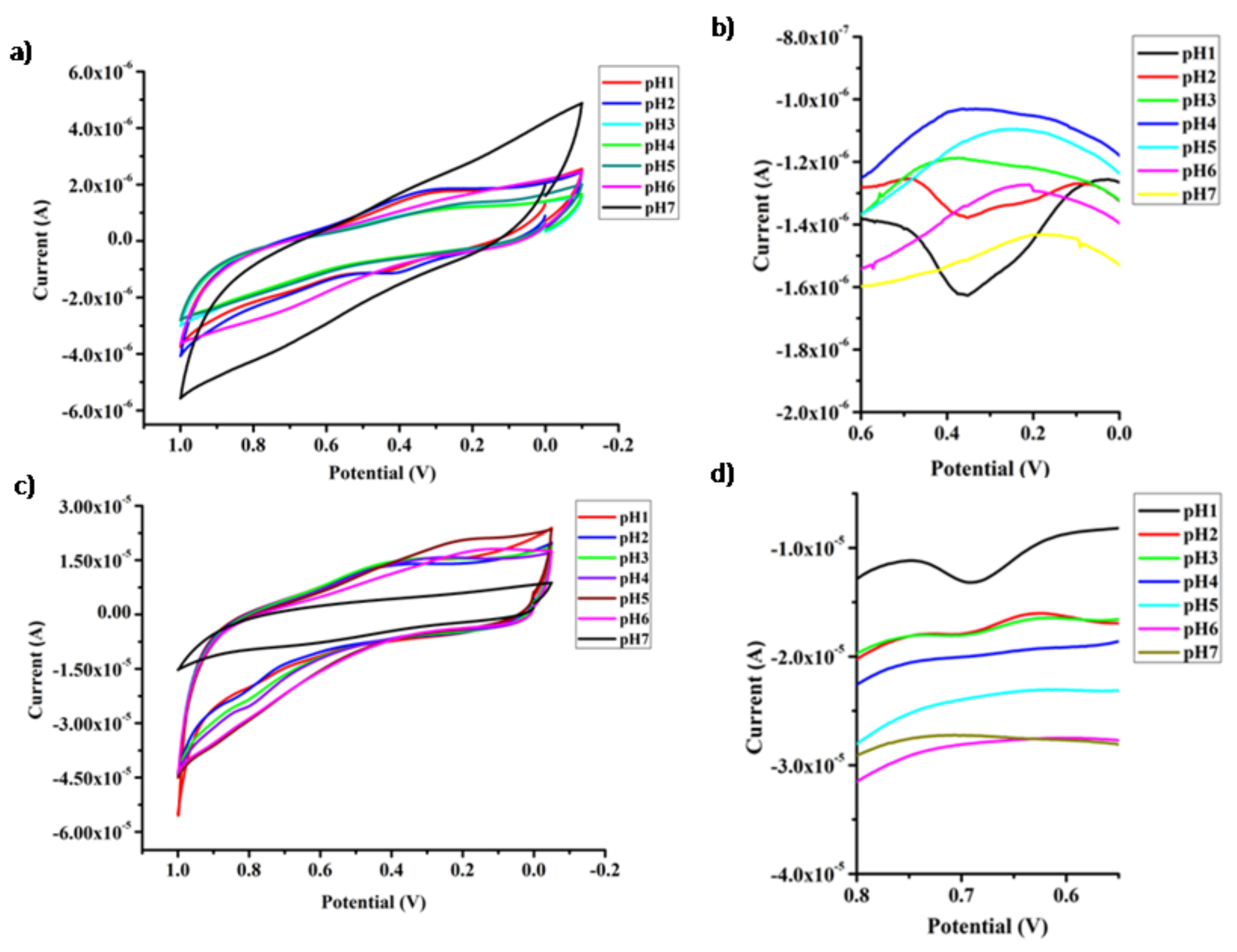
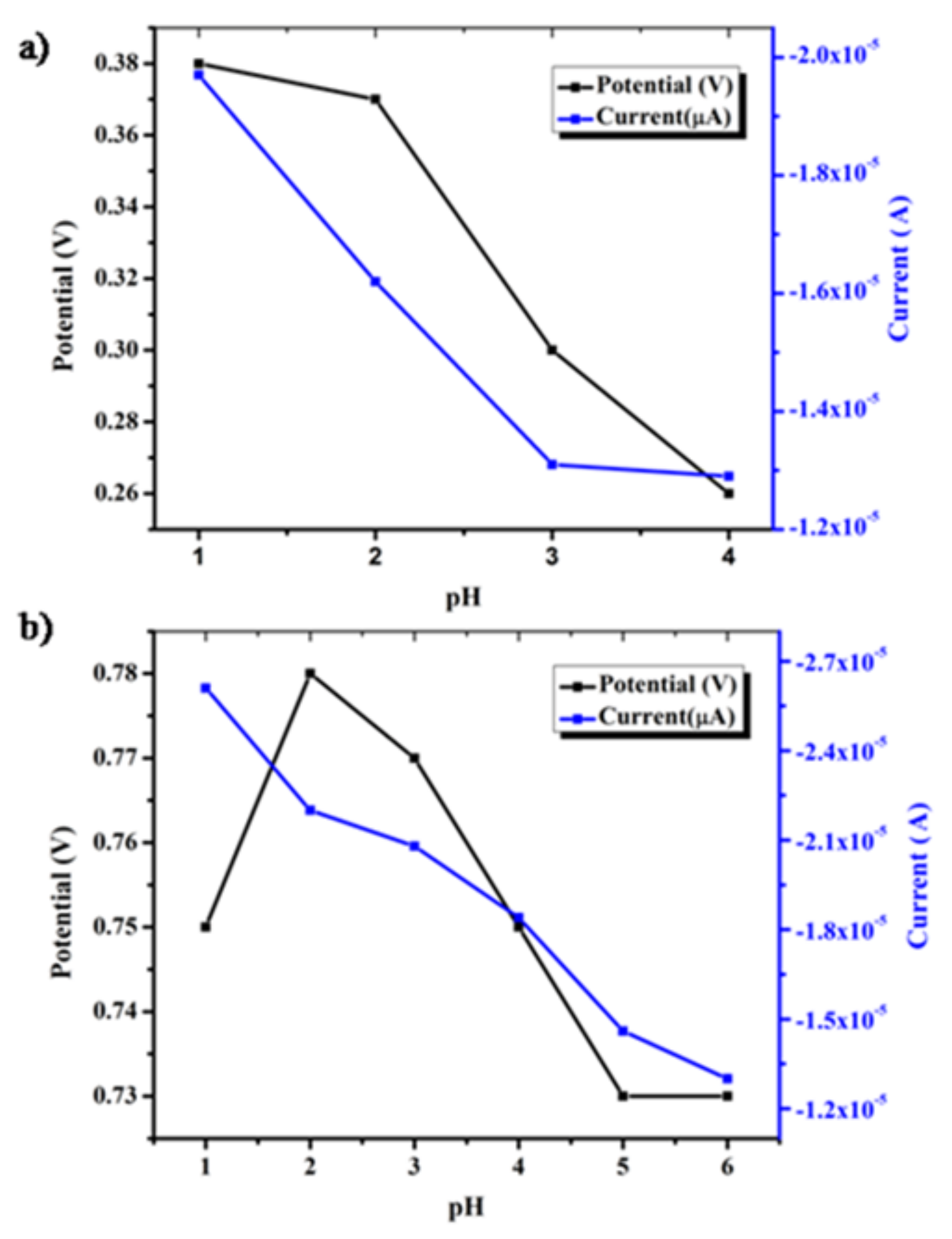


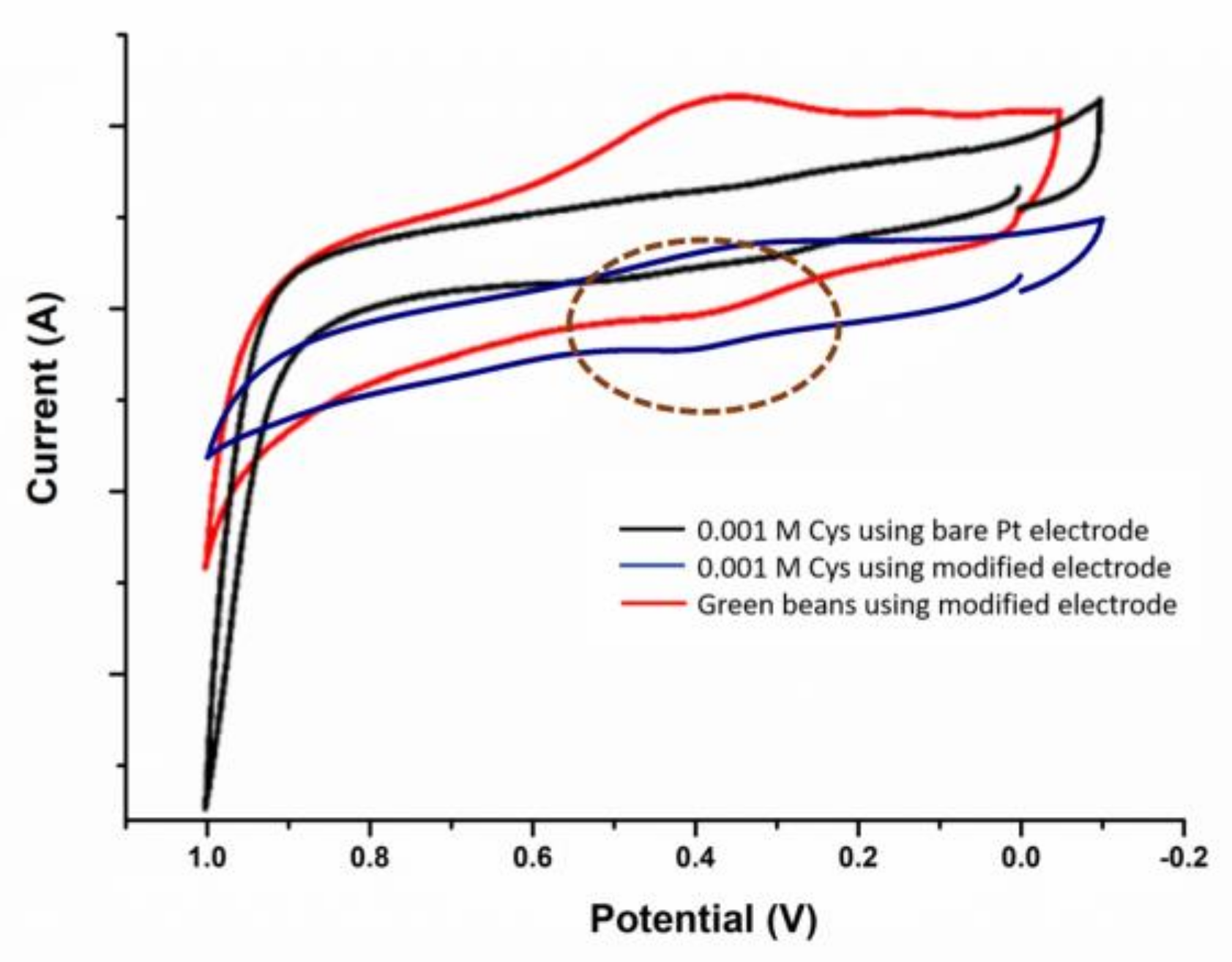
| pH | Composition |
|---|---|
| 1 | HCl + KCl |
| 2 | HCl + KCl |
| 3 | Acetic acid + Sodium acetate |
| 4 | Acetic acid + Sodium acetate |
| 5 | Acetic acid + Sodium acetate |
| 6 | Acetic acid + Sodium acetate |
| 7 | Disodium hydrogen phosphate + HCl |
© 2020 by the authors. Licensee MDPI, Basel, Switzerland. This article is an open access article distributed under the terms and conditions of the Creative Commons Attribution (CC BY) license (http://creativecommons.org/licenses/by/4.0/).
Share and Cite
Babar, D.G.; Gupta, N.R.; Nandi, G.; Sarkar, S. Carbon Nano Onions–Polystyrene Composite for Sensing S-Containing Amino Acids. J. Compos. Sci. 2020, 4, 90. https://doi.org/10.3390/jcs4030090
Babar DG, Gupta NR, Nandi G, Sarkar S. Carbon Nano Onions–Polystyrene Composite for Sensing S-Containing Amino Acids. Journal of Composites Science. 2020; 4(3):90. https://doi.org/10.3390/jcs4030090
Chicago/Turabian StyleBabar, Dipak Gorakh, Nidhi Rani Gupta, Goutam Nandi, and Sabyasachi Sarkar. 2020. "Carbon Nano Onions–Polystyrene Composite for Sensing S-Containing Amino Acids" Journal of Composites Science 4, no. 3: 90. https://doi.org/10.3390/jcs4030090
APA StyleBabar, D. G., Gupta, N. R., Nandi, G., & Sarkar, S. (2020). Carbon Nano Onions–Polystyrene Composite for Sensing S-Containing Amino Acids. Journal of Composites Science, 4(3), 90. https://doi.org/10.3390/jcs4030090






